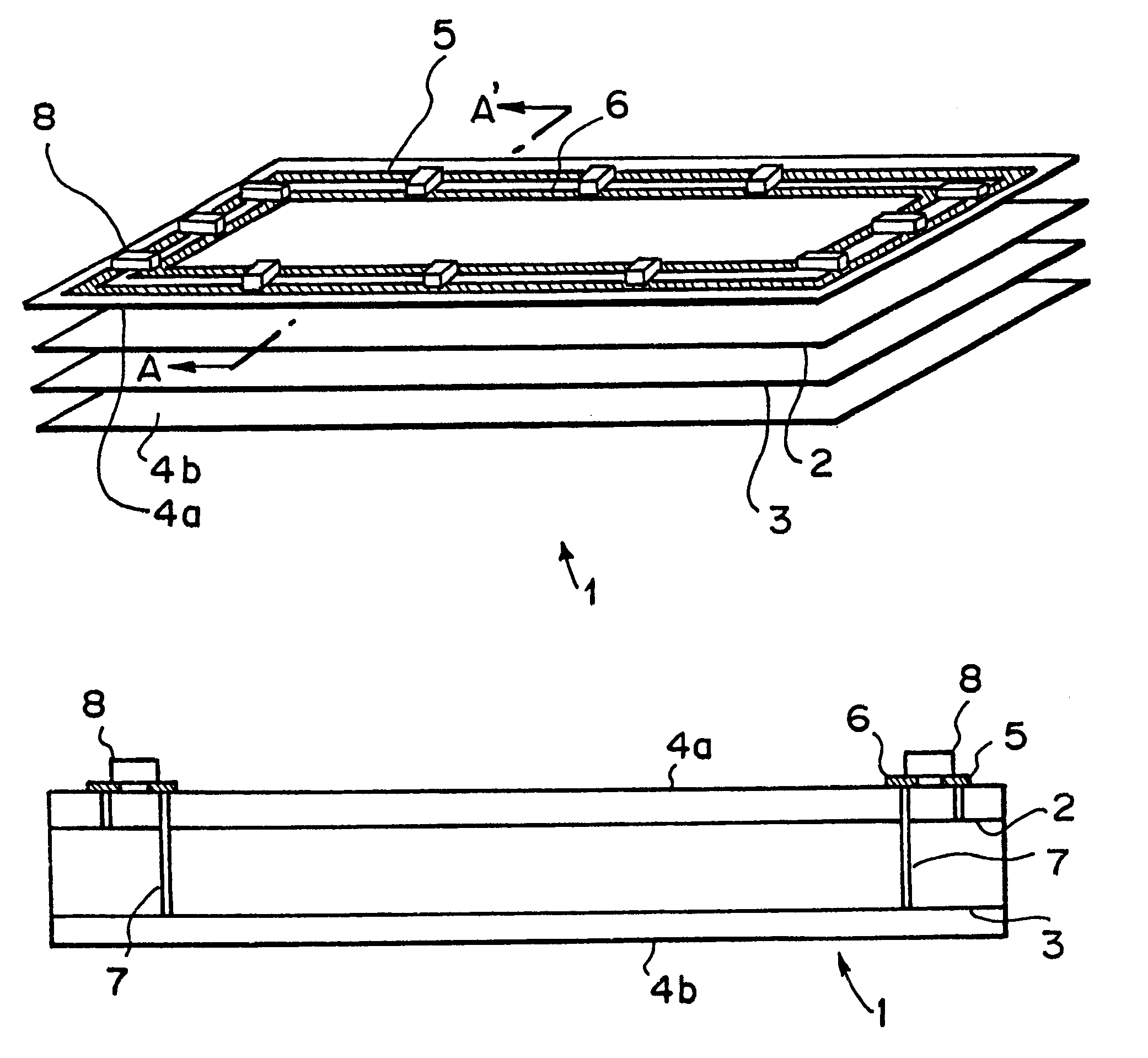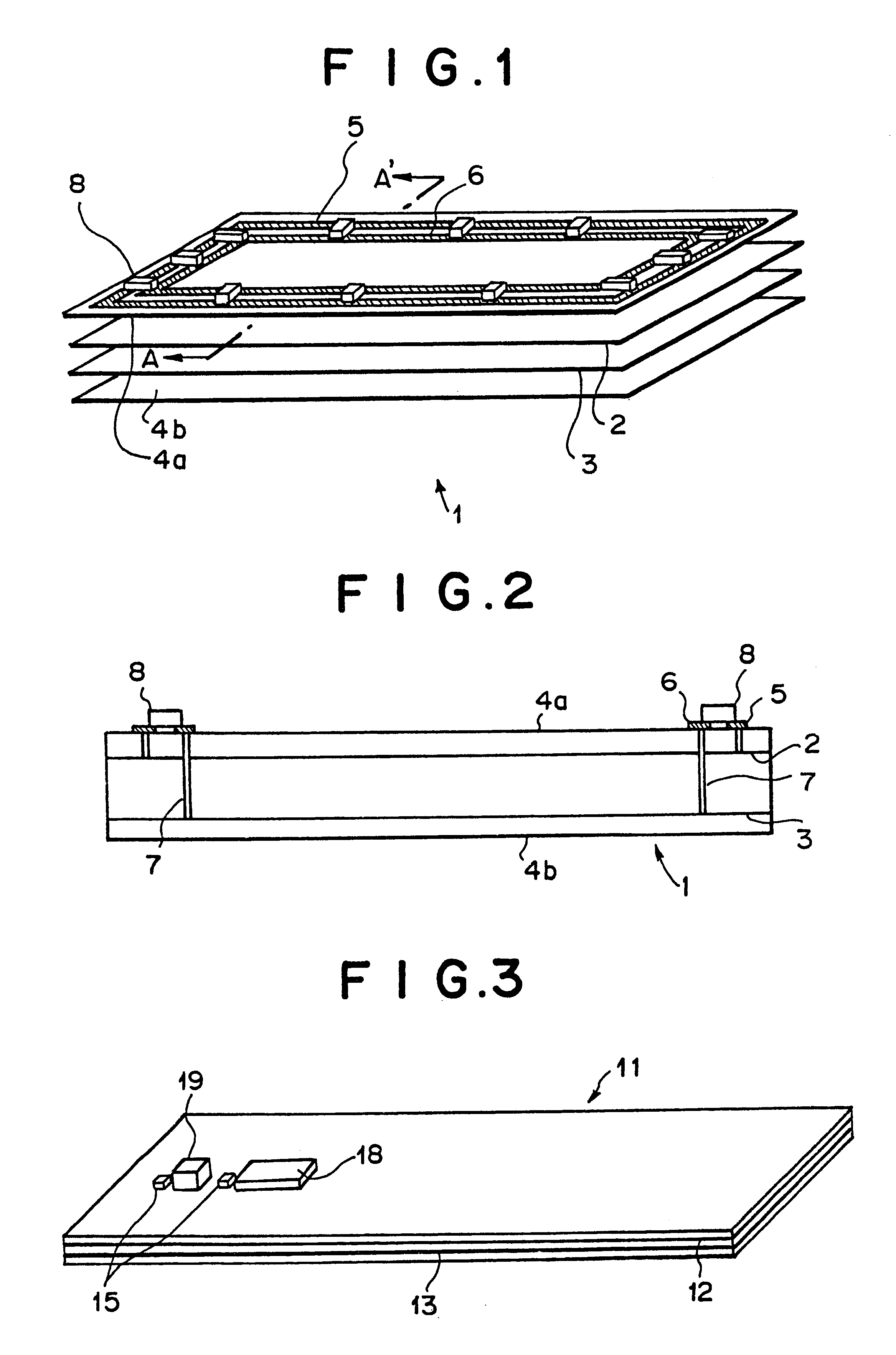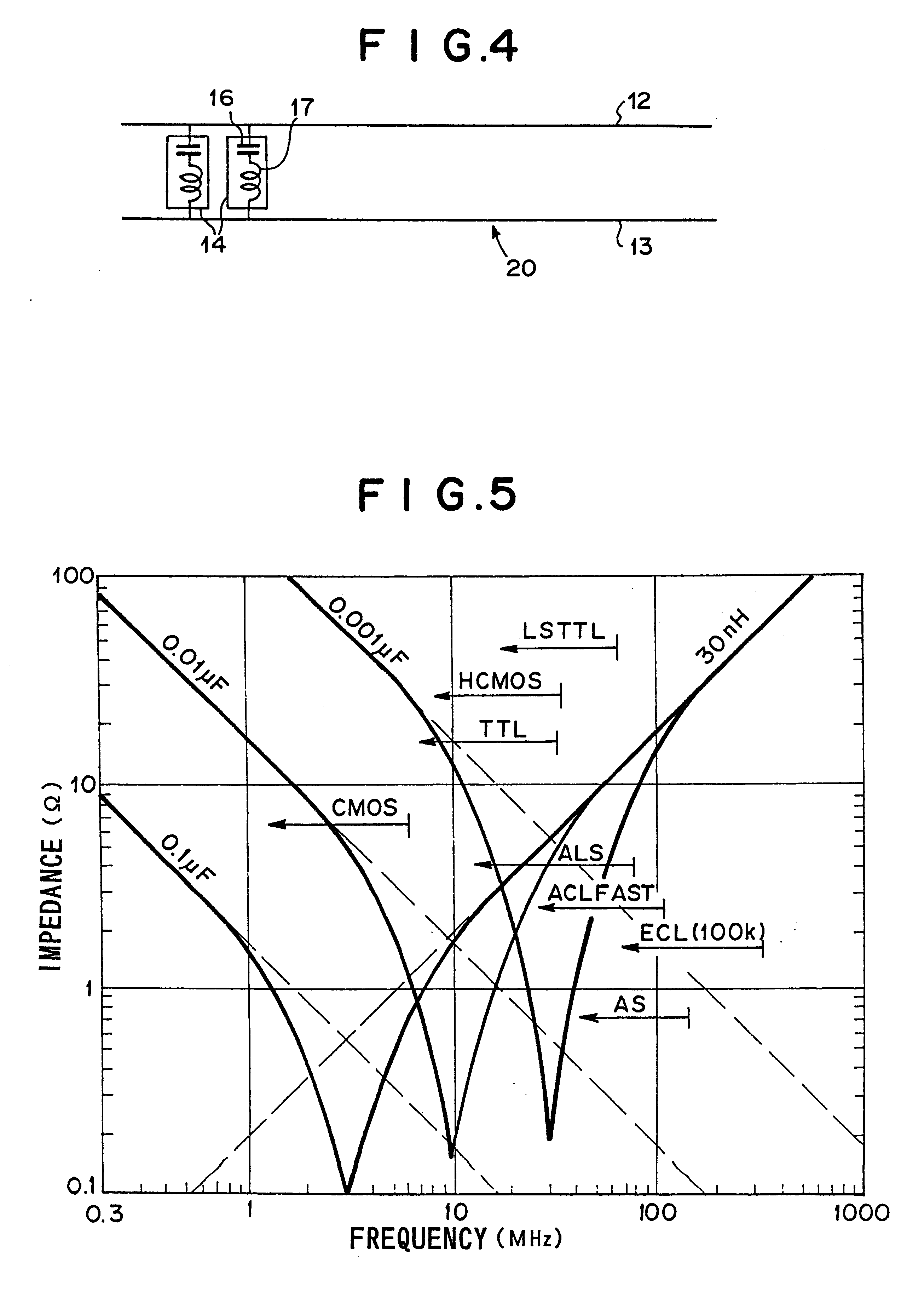Printed circuit board with capacitors connected between ground layer and power layer patterns
a printed circuit board and capacitor technology, applied in the direction of line-transmission details, sustainable manufacturing/processing, final product manufacturing, etc., can solve the problems of device malfunction, reduced mounting density, and inability of cage structure to suppress electromagnetic waves from radiating,
- Summary
- Abstract
- Description
- Claims
- Application Information
AI Technical Summary
Problems solved by technology
Method used
Image
Examples
first embodiment
Next, with reference to the accompanying drawings, embodiments of the present invention will be described. FIGS. 1 and 2 show the structure of a laminated printed circuit board 1 according to the present invention. FIG. 1 is an exploded perspective view showing the structure of individual layers of the printed circuit board 1. FIG. 2 is a sectional view taken along the line A-A' shown in FIG. 1.
The printed circuit board 1 has four metal layers on which circuit patterns are formed by electrolytic plating method. Each layer is separated with an insulator (not shown) composed of such as glass epoxy or paper phenol. The four layers of the printed circuit board 1 are referred to as a first layer, a second layer, a third layer, and a fourth layer that are successively disposed from the top thereof. The first layer and the fourth layer are used as signal wiring layers 4a and 4b for wiring signal lines. The second layer is a ground layer 2. The third layer is a power supply layer 3. So-call...
second embodiment
FIGS. 7 and 8 show the structure of a laminated printed circuit board 21 according to the present invention. FIG. 7 is an exploded perspective view showing the printed circuit board 21. FIG. 8 is a sectional view taken along line A A' shown in FIG. 7.
The printed circuit board 21 has four metal layers on which circuit patterns are formed by electrolytic plating method. Each layer is separated with an insulator composed of such as glass epoxy or paper phenol. The four layers of the printed circuit board 21 are referred to as a first layer, a second layer, a third layer, and a fourth layer that are successively disposed from the top thereof. The first layer and the fourth layer are used as signal wiring layers 24 for wiring signal lines. The second layer is a ground layer 22. The third layer is a power supply layer 23. So-called solid patterns are formed on the entire surfaces of the ground layer 22 and the power supply layer 23.
On the periphery of the printed circuit board, a top laye...
third embodiment
FIGS. 10 and 11 show the structure of a laminated printed circuit board 31 according to the present invention. FIG. 10 is an exploded perspective view of the printed circuit board 31. FIG. 11 is a sectional view taken along line A A' shown in FIG. 10.
The printed circuit board 31 has four metal layers on which circuit patterns are formed by electrolytic plating method. Each layer is separated with an insulator composed of such as glass epoxy or paper phenol. The four layers of the printed circuit board 31 are referred to as a first layer, a second layer, a third layer, and a fourth layer that are successively disposed from the top thereof. The first layer and the fourth layer are used as signal wiring layers 34 for wiring signal lines. The second layer is a ground layer 32. The third layer is a power supply layer 33. So-called solid patterns are formed on the entire surfaces of the ground layer 32 and the power supply layer 33.
On the first layer 34a as the top layer, a plurality of c...
PUM
 Login to View More
Login to View More Abstract
Description
Claims
Application Information
 Login to View More
Login to View More - R&D
- Intellectual Property
- Life Sciences
- Materials
- Tech Scout
- Unparalleled Data Quality
- Higher Quality Content
- 60% Fewer Hallucinations
Browse by: Latest US Patents, China's latest patents, Technical Efficacy Thesaurus, Application Domain, Technology Topic, Popular Technical Reports.
© 2025 PatSnap. All rights reserved.Legal|Privacy policy|Modern Slavery Act Transparency Statement|Sitemap|About US| Contact US: help@patsnap.com



